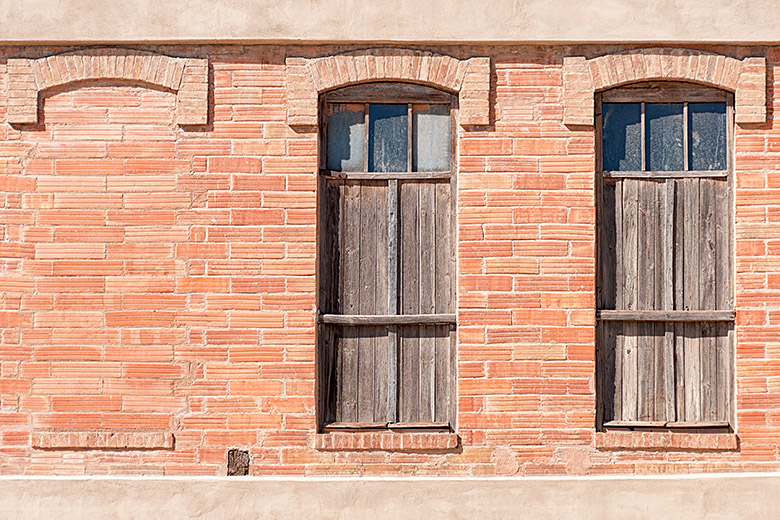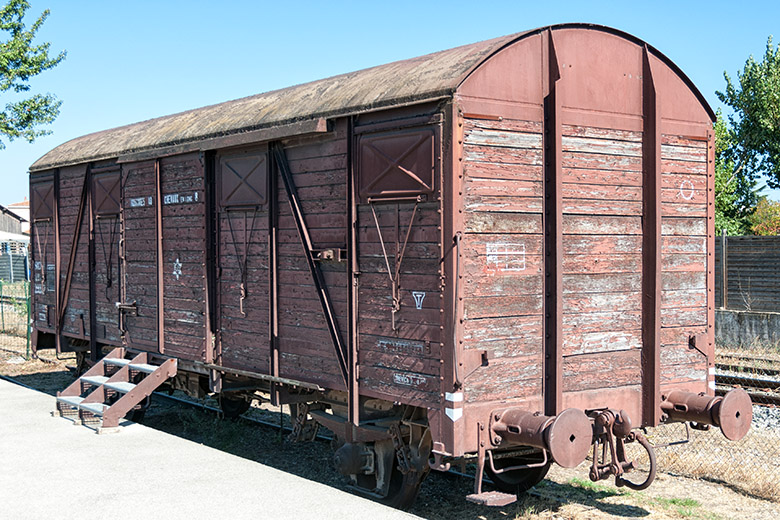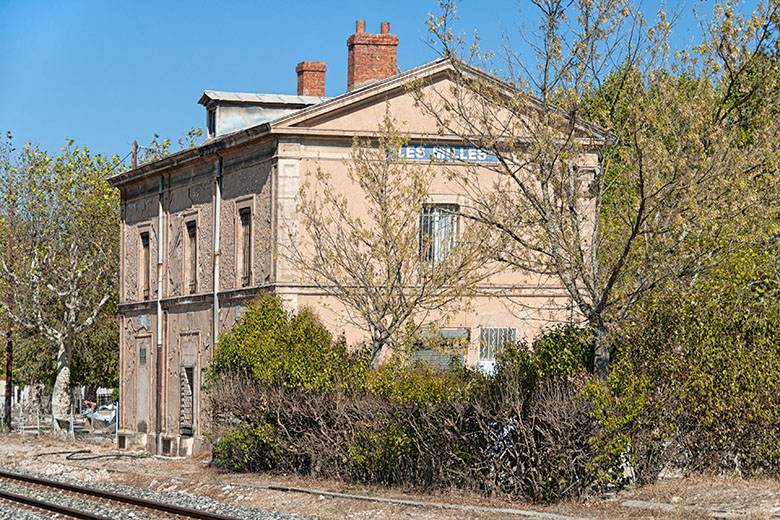
Le Camp des Milles
Click on any image to see a larger (1500 x 1000 pixel) version!
Les Milles is a village located a couple of miles to the southwest of Aix-en-Provence. There, an internment camp was set up in a bankrupt tile factory in 1939; this became known as the Camp des Milles. From September 1939 through June 1940, it was used to detain "enemy subjects", i.e., mostly German and Austrian citizens, regardless of their political affiliation and whether they had left their homeland to escape Nazism or had lived in France for a long time.
From July 1940 through July 1942, the site turned into a camp for "undesirables", which in those days mostly meant Jews. Following the defeat of France, the Camp des Milles rapidly became overpopulated, the number of inmates reaching 3,500 during the summer of 1940. Starting in November of the same year, the camp was placed under the authority of the ministry of the interior; from then on, it was the only French transit point for legal or illegal overseas emigration. As time went by, conditions deteriorated due to overcrowding, disease, and lack of food.
From August through September 1942, Le Camp des Milles was the hub of Jewish deportation to Auschwitz via Drancy and Rivesaltes. More than 2,000 Jewish men, women, and children were deported, including Jews who had served in the French armed forces and infants (the youngest deportee was one year old). These events occurred even before the German occupation of the southern part of France on November 11, 1942.

|

|
Façade detail |
Most windows have been boarded or bricked up |
One of the particularities of the Camp des Milles was the extremely high percentage of artists and intellectuals, such as Max Ernst and Hans Bellmer, or the 1922 Nobel Prize laureate in Medicine Otto Meyerhof and Tadeus Reichstein who would go on to share the Nobel Prize in Medicine in 1950 for the discovery of adrenal cortex hormones.
On September 10, 2012, seventy years to the day after the last train left the Camp des Milles, the memorial site was inaugurated by French Prime Minister Jean-Marc Ayrault and Alain Chouraqui, president of the Camp des Milles foundation. Less than a week later, on Saturday, September 15, we visited the place, the only French internment and deportation camp of World War II that still exists today. The exhibit is organized in three major parts: learning, seeing, and thinking.
Learning. This part tells the story of the Camp des Milles along with countless letters, newspaper articles, photographs, and audiovisual presentations of individuals that were confined here. The exhibit is incredibly rich in historical documents and details, and it wouldn't be hard to spend several hours and lose track of time completely. Just about everything is presented in both French and English. Looking at all the evidence, It would be all too easy to lose faith in humankind were it not for the fact that great care is taken to also honor those who did everything they could to help. For instance, it is here that we learned of Varian Fry, one of the unsung heroes of this somber part of history to whom many of the Camp des Milles inmates owe their life.

|

|
Rows of bunk beds once occupied this space |
Old window |
Seeing. This section allows visitors to explore the various areas within the factory. There are hardly any explanations; one simply walks through cavernous and dark areas that were once occupied by prisoners. In this part of the memorial site, visitors can also admire some of the artwork left on the factory walls by the inmates. However, none of the original furnishings remain because after the war, the factory briefly opened again, and everything that did not directly contribute to the production of tiles was removed.
Thinking. Here, visitors are taught to recognize the precursory signs that allow hatred and prejudice to gradually and insidiously escalate into the kind of environment in which genocide becomes a possibility. This is shown using video and audio recordings, as well as written documents from relatively recent real world examples, such as the Rwandan genocide. The concept is very interesting but needs more work as the translation effort is not nearly complete yet. Nevertheless, it is an eye-opening experience that clearly fulfills its didactic mission.
Perhaps the most difficult part of our visit was the permanent Serge Klarsfeld exhibit, "1942–1944: 11,000 Jewish children deported from France to Auschwitz". An incredibly large number of children are all represented by a photograph, their date of birth, their address, and the date and number of the train that brought them to the death camps. It is an overwhelming collection, the work of a lifetime, and absolutely frightening in its effectiveness. A subset of the collection was published in book form, an event the New York Times noted on December 5, 1996 with the article, "The Holocaust Children Who Did Not Grow Up" by Ralph Blumenthal. A PDF version of the text is available here in case the previous link should at some point cease to work.

|

|
Prisoners were sent off in cars like this one |
The old station building of "Les Milles" |
Finally, we explored the outside of the site, making our way down the "Walk of the Deportees" to the train tracks from where so many of the inmates of Le Camp des Milles were sent to their deaths and where an original railway car from that period has been set up as a reminder of what happened here.
In most of the areas inside the Camp des Milles taking pictures is not permitted, so this page includes far fewer photographs than we normally present. It's not a problem, though, because this is definitely a place one should visit in person. The Camp des Milles is open Tuesday through Sunday from 10 am through 7 pm. More details are available on the web, but at the time of writing (mid-October 2012) the contents were only available in French.
Home | Site Info | Family | The Area | Trips | France | Work | Rants | Photography | Odds & Ends
This page was last modified on October 15, 2012
Send feedback about this page to feedback@kiechle.com
https://www.kiechle.com/trips/cdm/index.htm
(optimized for Retina display)
All contents © 1999-2025 The Kiechles